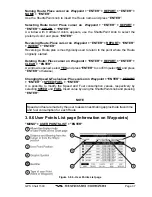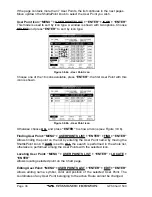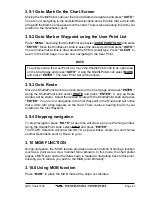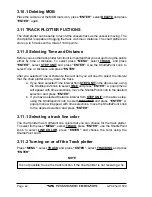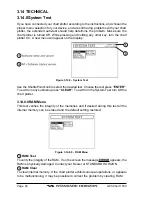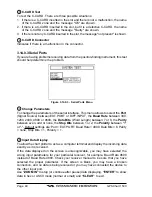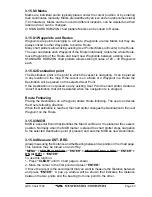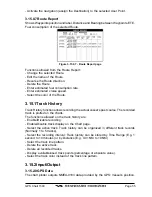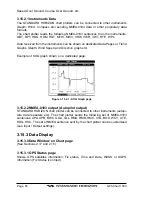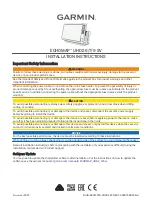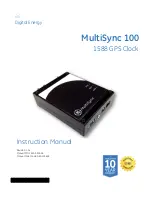
Page 48
GPS Chart 150C
C-CARD Test
To test the C-CARD. There are three possible situations:
1. if there is a C-CARD inserted in the slot and there is not a malfunction, the name
of the C-CARD zone and the message "OK" are shown.
2. if there is a C-CARD inserted in the slot, but it is a defective C-CARD, the name
of the C-CARD zone and the message "Faulty" are shown.
3. if there is not any C-CARD inserted in the slot, the message "not present" is shown.
C-CARD Connector
Indicates if there is a malfunction in the connector.
3.14.0.3 Serial Ports
If you are having problems receiving data from the position-finding instrument, this test
should help determine the problem.
Figure 3.14.0.3 - Serial Ports Menu
Change Parameters
To change the parameters of the serial interface. This menu allows to select the Port
(Signal Source) between EXT.PORT or DIFF.INPUT, the Baud Rate between 300,
1200, 2400, 4800 or 9600, the Data Bits (Word Length) between 7 or 8, the Parity
between even, odd or none, the Stop Bits between 1 or 2, the Polarity between "+"
or "-". Default settings are: Port = EXT.PORT, Baud Rate = 4800, Data Bits = 8, Parity
= none, Stop Bits = 1, Polarity = +.
Input Data Display
To allow the chart plotter to act as a computer terminal and display the incoming data
exactly as it is received.
If the data displayed on the screen is unrecognizable, you may have selected the
wrong input parameters for your particular receiver, for example, Baud Rate 9600
instead of Baud Rate 4800. Check your receiver manual to be sure that you have
selected the proper parameter. If the screen is blank, you may have a broken
connection, and no data is being received or you may have connected the device to
the other input port.
Use “ZOOM IN” to stop (or continue after pause) data displaying, “ENTER” to show
data in hex or ASCII mode (normal or small) and “CLEAR” to exit.
Summary of Contents for CP150C
Page 1: ...CP150C GPS Chart plotter Owner s Manual ...
Page 72: ......




